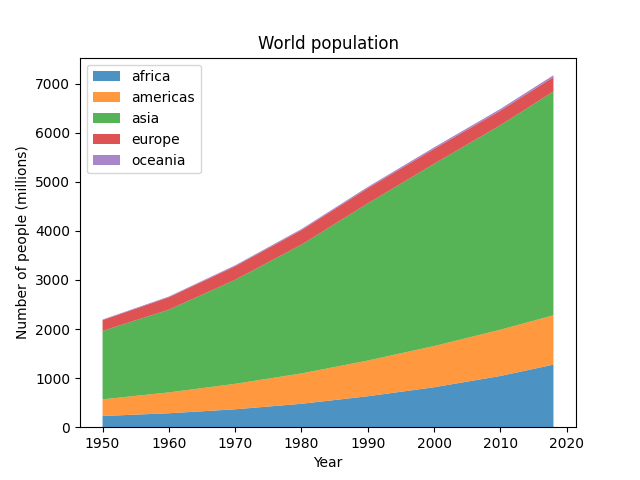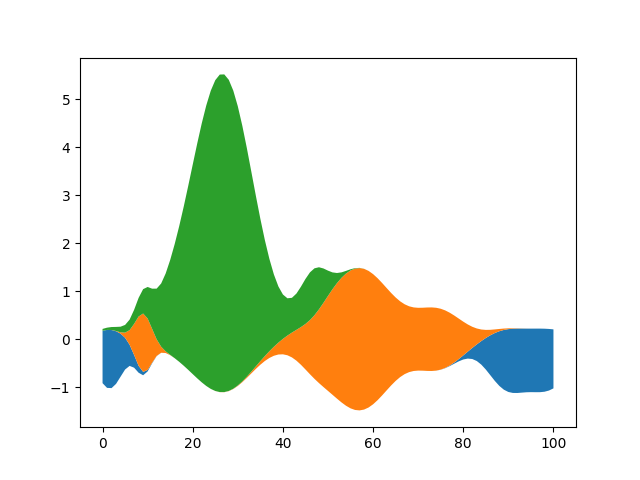Nota
Fare clic qui per scaricare il codice di esempio completo
Stackplot e streamgraph #
Stackplot #
Gli stackplot disegnano più set di dati come aree impilate verticalmente. Questo è utile quando i singoli valori dei dati e in aggiunta il loro valore cumulativo sono di interesse.
import numpy as np
import matplotlib.pyplot as plt
# data from United Nations World Population Prospects (Revision 2019)
# https://population.un.org/wpp/, license: CC BY 3.0 IGO
year = [1950, 1960, 1970, 1980, 1990, 2000, 2010, 2018]
population_by_continent = {
'africa': [228, 284, 365, 477, 631, 814, 1044, 1275],
'americas': [340, 425, 519, 619, 727, 840, 943, 1006],
'asia': [1394, 1686, 2120, 2625, 3202, 3714, 4169, 4560],
'europe': [220, 253, 276, 295, 310, 303, 294, 293],
'oceania': [12, 15, 19, 22, 26, 31, 36, 39],
}
fig, ax = plt.subplots()
ax.stackplot(year, population_by_continent.values(),
labels=population_by_continent.keys(), alpha=0.8)
ax.legend(loc='upper left')
ax.set_title('World population')
ax.set_xlabel('Year')
ax.set_ylabel('Number of people (millions)')
plt.show()

Streamgraph #
Utilizzando il parametro della linea di base , è possibile trasformare un normale grafico ad area in pila con linea di base 0 in un grafico a flusso.
# Fixing random state for reproducibility
np.random.seed(19680801)
def gaussian_mixture(x, n=5):
"""Return a random mixture of *n* Gaussians, evaluated at positions *x*."""
def add_random_gaussian(a):
amplitude = 1 / (.1 + np.random.random())
dx = x[-1] - x[0]
x0 = (2 * np.random.random() - .5) * dx
z = 10 / (.1 + np.random.random()) / dx
a += amplitude * np.exp(-(z * (x - x0))**2)
a = np.zeros_like(x)
for j in range(n):
add_random_gaussian(a)
return a
x = np.linspace(0, 100, 101)
ys = [gaussian_mixture(x) for _ in range(3)]
fig, ax = plt.subplots()
ax.stackplot(x, ys, baseline='wiggle')
plt.show()
